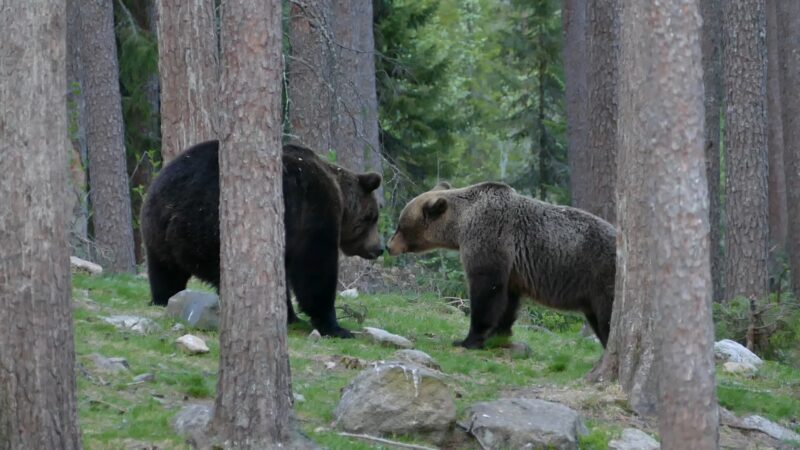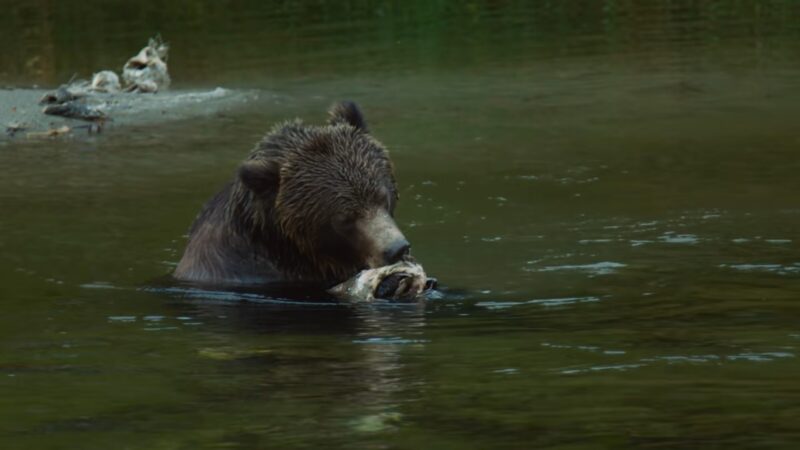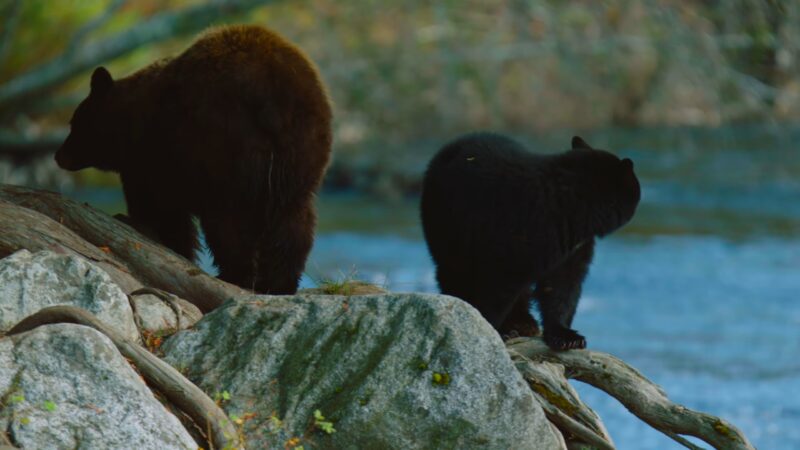Unveiling the secrets of the bear kingdom requires a keen eye and a deep understanding of these creatures. The world of bears is a fascinating one, often shrouded in mystery and misconception. This article aims to clarify one of the most intriguing aspects of bear biology: the differences between male and female species.
Why is this important? Understanding these differences is crucial for wildlife enthusiasts, researchers, and anyone interested in the intricate balance of nature. Here, we’ll explore the physical, behavioral, and ecological contrasts between male and female bears, offering a clear, comprehensive view of their distinct worlds.
Physical Differences
Size and Build

The most noticeable difference between male and female bears is their size. Male bears, also known as boars, are significantly larger than their female counterparts, known as sows. This size disparity is particularly evident in species like the brown bear, where males can weigh up to 30% more than females.
The larger size of male bears is not just in weight but also in their overall build. They possess broader shoulders, larger paws, and a more pronounced muscle mass compared to females.
This size difference is a result of sexual dimorphism, a common trait in the animal kingdom where the two sexes of a species exhibit different characteristics beyond their sexual organs.
Skull and Facial Features
Examining a bear’s skull can also provide clues to its sex. Male bears have larger, more robust skulls with a more pronounced sagittal crest – a bony ridge on the top of the skull where jaw muscles attach. This feature is less prominent in females. The reason behind this difference lies in the feeding habits and overall strength required for survival.
Males, being larger, require stronger jaw muscles for their diet and territorial fights. Additionally, the facial structure of male bears tends to be broader and more rugged compared to the more refined features of female bears.
Reproductive Traits
Naturally, the most fundamental difference lies in their reproductive organs. Male bears have external genitalia, which are more evident in species like the polar bear. In females, the genitalia are less conspicuous, and the presence of teats is a clear indicator of a female, especially if she’s nursing cubs.
However, these traits are not always easy to spot in the wild, making it challenging to determine a bear’s sex based solely on reproductive characteristics.
Behavioral Differences
Mating Behavior
The mating rituals of bears are a clear window into the differences between males and females. During the mating season, males exhibit more aggressive and territorial behaviors. They roam vast distances in search of potential mates, often engaging in fierce battles with other males to establish dominance and breeding rights.
Female bears, on the other hand, are more selective and may mate with multiple males during the mating season. This behavior increases genetic diversity in their offspring, a crucial aspect of the bear population’s health.
Rearing of Cubs
Post-mating, the paths of male and female bears diverge significantly. Female bears are solely responsible for the upbringing of cubs. They exhibit strong maternal instincts, nurturing and protecting their young for up to two years. During this time, females are fiercely protective and will go to great lengths to ensure the safety of their offspring.
Males play no role in rearing the cubs and, in some cases, can pose a threat to them, leading females to be cautious and avoid male bears while with their cubs.
Territoriality and Social Structure
Male bears are more territorial than females and tend to have larger home ranges. This behavior is driven by the need to access more resources and attract mates. Females, while also territorial, have smaller ranges, primarily focused on areas rich in food and safe for raising cubs.
This difference in territorial behavior highlights the differing priorities between male and female bears, with males focusing on reproduction and females on nurturing.
Ecological Roles

Impact on Ecosystems
Male and female bears play distinct roles in their ecosystems. Males, due to their larger size and greater food consumption, have a significant impact on prey populations and plant life. They also contribute to seed dispersal and nutrient cycling through their feeding habits.
Females, with their focus on raising cubs, play a crucial role in maintaining bear populations. Their choices in denning sites and foraging areas influence the health and distribution of bear populations.
Adaptation to Environmental Changes
The way male and female bears adapt to environmental changes also differs. Males, being larger and more mobile, can venture into new territories in response to food scarcity or climate change. Females, especially those with cubs, are more cautious and prefer to stay within known safe territories.
This difference in adaptability has implications for bear conservation, as changing climates and human encroachment on habitats affect male and female bears differently.
Interactions with Other Species
Male and female bears also differ in their interactions with other species. Males, being more aggressive, can be a threat to other wildlife, especially during the mating season. Females, particularly when with cubs, are more defensive and avoid unnecessary confrontations.
Understanding these interaction patterns is vital for wildlife management and conservation efforts.
Interaction with Humans
Conflict and Coexistence
The interaction between male and female bears and humans varies considerably. Males, due to their larger territories and quest for food, are more likely to wander into human-inhabited areas, leading to potential conflicts. This is especially true in areas where natural food sources are scarce.
Female bears, particularly those with cubs, tend to be more cautious and avoid human contact. However, when they do venture into human territories, usually in search of food, they can become fiercely protective if they perceive a threat to their cubs.
Bear Management Implications
Understanding the behavioral differences between male and female bears is crucial for effective bear management and conflict prevention. Management strategies need to account for the larger roaming patterns of male bears and the protective nature of females with cubs.
This knowledge helps in designing better waste management practices in bear habitats, creating awareness programs for local communities, and implementing policies that minimize human-bear conflicts.
Conservation and Research
Importance in Species Conservation
Both male and female bears play pivotal roles in the conservation of their species. Protecting both sexes is crucial for maintaining genetic diversity and ensuring healthy bear populations.
Conservation efforts need to consider the specific needs and behaviors of both males and females, especially in the face of habitat loss and climate change.
Research Opportunities and Challenges
Studying the differences between male and female bears offers unique insights into bear biology and ecology. However, it also presents challenges, as close observation is difficult due to their elusive nature and the dangers associated with close human contact.
Advances in technology, such as GPS tracking and remote camera traps, are aiding researchers in gathering data without disturbing these magnificent animals.
Beyond the Binary: Individual Variability

Personality and Individual Traits
While the differences between male and female bears are significant, it’s essential to recognize the individual variability within each sex. Bears, like humans, have unique personalities and behaviors that may not always align with the general characteristics of their sex.
Some males might exhibit less aggressive tendencies, while some females might roam larger territories than is typical.
The Role of Environment and Experience
The environment and individual experiences also play a crucial role in shaping a bear’s behavior. Bears in different regions adapt to local conditions, and their interactions with humans and other wildlife can significantly influence their behavior.
This variability underlines the importance of considering individual bear histories and habitats in research and conservation efforts.
FAQs
Can you determine the age of a bear based on the differences between males and females?
Age determination in bears is not directly related to the differences between males and females. Age is typically assessed through methods like tooth wear and growth rings in a tooth (much like tree rings), which are not sex-specific.
However, in general, older bears might show more pronounced sex-specific characteristics, such as larger size in males.
Do male and female bears have different lifespans?
Yes, there can be differences in lifespan between male and female bears. Generally, female bears tend to live longer than males. This is partly because males often engage in more dangerous behaviors, such as fighting for mates or roaming over larger areas, which can lead to more injuries or conflicts with humans.
Are there differences in the hibernation patterns of male and female bears?
Hibernation patterns can vary between male and female bears, particularly in species that hibernate. Females with cubs often enter dens earlier and emerge later than males, as they prioritize the safety and development of their cubs.
Pregnant females also need to give birth and nurse their cubs during hibernation, which requires a safe and uninterrupted denning period.
How do male and female bears interact during non-mating seasons?
Outside of mating seasons, male and female bears usually lead solitary lives and do not often interact, except in areas with abundant food sources like salmon runs. When they do cross paths, interactions are typically non-aggressive unless there are territorial disputes or a female is protecting her cubs.
Do male and female bears have different diets?
While the basic diet of bears is similar across sexes, there can be variations due to the differing size and strength. Males, being larger, may take down larger prey or access food sources requiring more strength to obtain.
Females, especially when with cubs, might focus on more accessible, high-energy foods to meet the demands of nursing.
Are there behavioral differences in how male and female bears react to human presence?
Reaction to human presence can vary among individual bears, but generally, males may be less cautious and more curious due to their size and strength. Females with cubs are often more cautious and can be aggressive if they perceive a threat to their cubs.
However, much depends on the bear’s personal experiences and the specific circumstances of the encounter.
Summary
In conclusion, discerning the differences between male and female bears offers a fascinating glimpse into the complex world of these majestic creatures. From the notable size and build disparities to distinct behavioral patterns and ecological roles, each sex plays a unique part in the bear’s life cycle and the broader ecosystem.
As we continue to coexist with these magnificent animals, appreciating and respecting these differences is key to ensuring their survival and the health of the ecosystems they inhabit.
Related Posts:
- Difference Between Male and Female Bald Eagles:…
- What Is the Difference Between a Coyote and a Wolf?…
- What Is the Difference Between Insects and Spiders?…
- Do Female Deer Have Antlers? - A Rare and Remarkable Feature
- Taiga Food Web: Interconnected Relationships between…
- What Are the Differences Between Mammals and Birds?…








